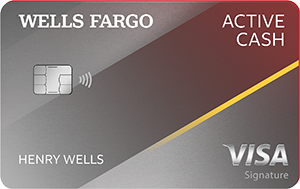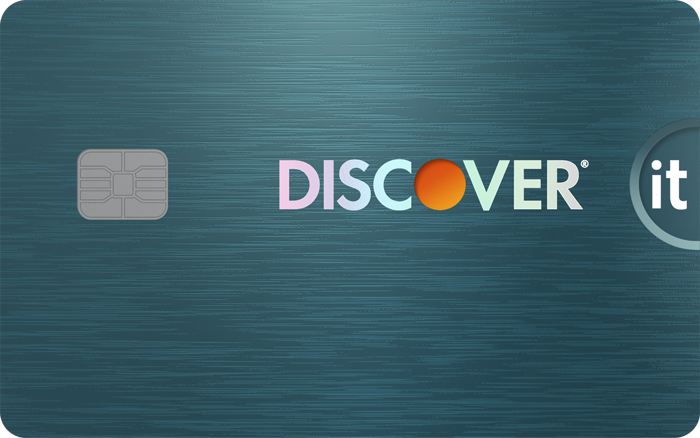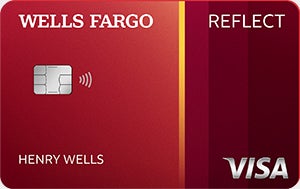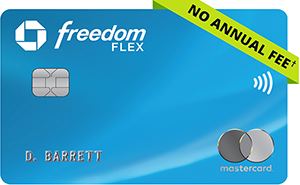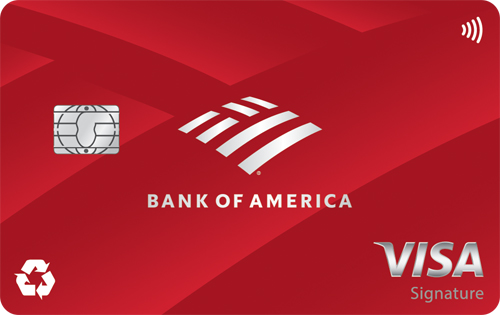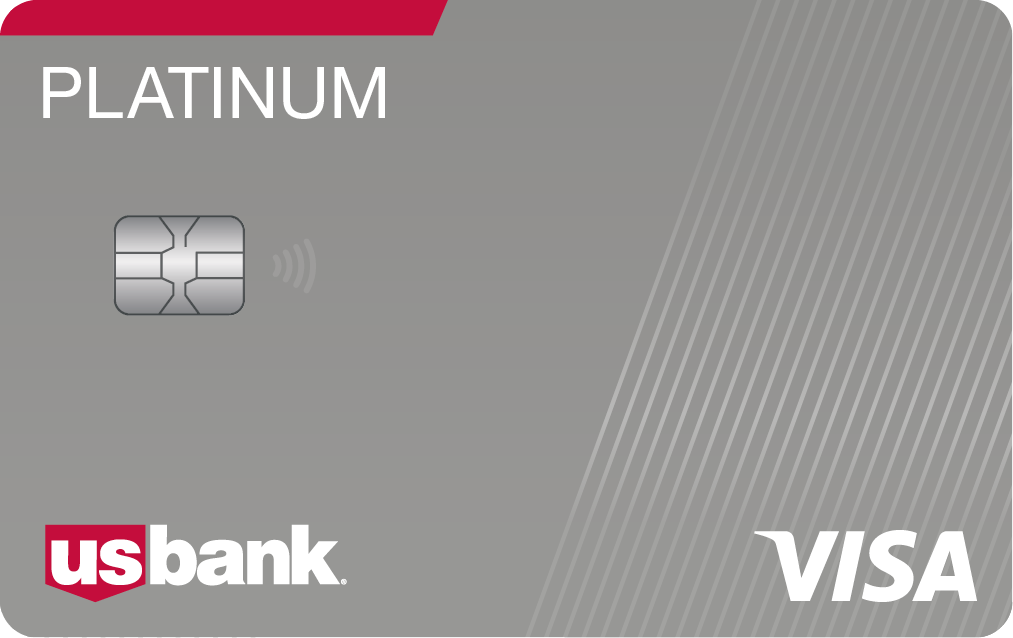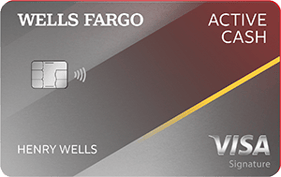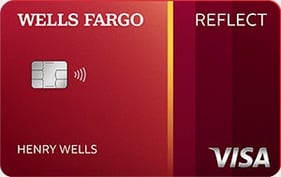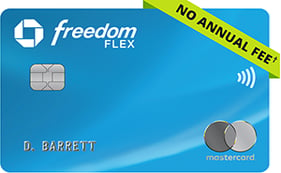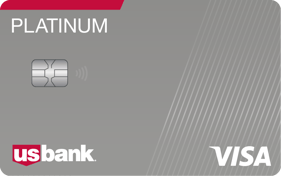Balance transfer credit cards are for those with good credit who want a lower interest rate or to consolidate debt. The best balance transfer credit cards even start with an intro 0% APR. Pay off what you owe before the intro period ends, and you can avoid interest fees entirely.
Featured balance transfer credit card offers
- 0% intro APR, 15 months from account opening on qualifying balance transfers: Wells Fargo Active Cash® Card (after that, 20.24%, 25.24%, or 29.99% Variable APR applies. See
rates and fees) - 0% intro APR, 21 months from account opening on qualifying balance transfers: Wells Fargo Reflect® Card: (after that, 18.24%, 24.74%, or 29.99% Variable APR applies. See rates and fees)
- Unlimited cash back: Wells Fargo Active Cash® Card
- Balance transfers and cash back: Discover it® Balance Transfer
- Long 0% intro APR: Wells Fargo Reflect® Card
- Rewards versatility: Chase Freedom Flex℠
- Rewards: Bank of America® Customized Cash Rewards credit card
- Balance transfers and cash back: Citi Double Cash® Card
- Balance transfers and purchases: U.S. Bank Visa® Platinum Card
Great for: Unlimited cash back
Good/Excellent (670-850)
Intro APR 0% intro APR for 15 months from account opening on purchases and qualifying balance transfers
Purchases: 0% intro APR, 15 months from account opening
Balance Transfers: 0% intro APR, 15 months from account opening on qualifying balance transfers
Regular APR
20.24%, 25.24%, or 29.99% Variable APR
Rewards Earn unlimited 2% cash rewards on purchases.
2% cash rewards
Annual Fee N/A
$0
Welcome Offer Earn a $200 cash rewards bonus after spending $500 in purchases in the first 3 months.
$200 cash rewards
-
This card’s unlimited 2% cash rewards on purchases is the highest we’ve seen for a flat-rate rewards card with no annual fee. It also has an incredibly easy-to-earn $200 welcome bonus and a generous intro APR offer. We simply haven’t come across this combination of top perks in one card before. Read Full Review
-
- Unlimited 2% cash rewards
- Long 0% intro APR offer
- Generous cash rewards welcome bonus
- No annual fee
- Cellphone protections
- Card perks
- Free FICO® Score updates
- No bonus categories
- Foreign transaction fees
- Balance transfer fee
-
- Select “Apply Now” to take advantage of this specific offer and learn more about product features, terms and conditions.
- Earn a $200 cash rewards bonus after spending $500 in purchases in the first 3 months.
- Earn unlimited 2% cash rewards on purchases.
- 0% intro APR for 15 months from account opening on purchases and qualifying balance transfers. 20.24%, 25.24%, or 29.99% Variable APR thereafter; balance transfers made within 120 days qualify for the intro rate and fee of 3% then a BT fee of up to 5%, min: $5.
- $0 annual fee.
- No categories to track or remember and cash rewards don’t expire as long as your account remains open.
- Find tickets to top sports and entertainment events, book travel, make dinner reservations and more with your complimentary 24/7 Visa Signature® Concierge.
- Up to $600 of cell phone protection against damage or theft. Subject to a $25 deductible.
Great for: Balance transfers and cash back
Good/Excellent (670-850)
Intro APR
Purchases: 0%, 6 months
Balance Transfers: 0%, 18 months
Regular APR
17.24% - 28.24% Variable APR
Rewards Earn 5% cash back on everyday purchases at different places you shop each quarter like grocery stores, restaurants, gas stations, and more, up to the quarterly maximum when you activate. Plus, earn unlimited 1% cash back on all other purchases—automatically.
1%-5% cash back
Annual Fee
$0
Welcome Offer N/A
Discover will match all the cash back you’ve earned at the end of your first year.
-
If you want a balance transfer card that still has value after the 0% intro APR period expires, then this may be the card for you. It offers 0% intro APR for 18 months on balance transfers with a 3% intro balance transfer fee, up to 5% fee on future balance transfers (see terms)*. That alone makes it a great balance transfer card. The lucrative cash back program means you can continue to reap benefits from this card even after you pay-off your balance transfer. Read Full Review
-
- Great intro APR offer
- Sign-up bonus offer
- Robust cash back program
- No annual fee
- FICO® Score for free
- No fixed bonus categories
-
- INTRO OFFER: Unlimited Cashback Match for all new cardmembers – only from Discover. Discover will automatically match all the cash back you’ve earned at the end of your first year! There’s no minimum spending or maximum rewards. You could turn $150 cash back into $300.
- Earn 5% cash back on everyday purchases at different places you shop each quarter like grocery stores, restaurants, gas stations, and more, up to the quarterly maximum when you activate. Plus, earn unlimited 1% cash back on all other purchases—automatically.
- Redeem your rewards for cash at any time.
- Your account may not always be eligible for balance transfers. Balance transfer eligibility is determined at Discover’s discretion.
- Discover could help you reduce exposure of your personal information online by helping you remove it from select people-search sites that could sell your data. It’s free, activate with the mobile app.
- No annual fee.
- Terms and conditions apply.
Great for: Long 0% intro APR
Good/Excellent (670-850)
Intro APR 0% intro APR for 21 months from account opening on purchases and qualifying balance transfers
Purchases: 0% intro APR, 21 months from account opening
Balance Transfers: 0% intro APR, 21 months from account opening on qualifying balance transfers
Regular APR
18.24%, 24.74%, or 29.99% Variable APR
Rewards
N/A
Annual Fee N/A
$0
-
This no-frills card is a solid choice if your priority is to avoid credit card interest for as long as possible. It offers an incredible 0% intro APR for 21 months from account opening on purchases and qualifying balance transfers. The balance transfer fee (5%, min: $5) is higher than some cards — but if you want an equally long intro APR on purchases, then this card is hard to beat. Read Full Review
-
- Long 0% intro APR offer
- No annual fee
- Cellphone protection
- Free FICO® Score
- Balance transfer fee
- Foreign transaction fee
-
- Select “Apply Now” to take advantage of this specific offer and learn more about product features, terms and conditions.
- 0% intro APR for 21 months from account opening on purchases and qualifying balance transfers. 18.24%, 24.74%, or 29.99% variable APR thereafter; balance transfers made within 120 days qualify for the intro rate, BT fee of 5%, min $5.
- $0 Annual Fee.
- Up to $600 of cell phone protection against damage or theft. Subject to a $25 deductible.
- Through My Wells Fargo Deals, you can get access to personalized deals from a variety of merchants. It's an easy way to earn cash back as an account credit when you shop, dine, or enjoy an experience simply by using an eligible Wells Fargo credit card.
Great for: Rewards versatility
On Chase's Secure Website.
On Chase's Secure Website.
Good/Excellent (670-850)
Intro APR 0% Intro APR on Purchases
Purchases: 0% Intro APR on Purchases, 15 months
Balance Transfers: 0% Intro APR on Balance Transfers, 15 months
Regular APR
20.49%-29.24% Variable
Rewards 5% cash back on up to $1,500 in combined purchases in bonus categories each quarter you activate. Enjoy new 5% categories each quarter! Plus, earn 5% cash back on travel purchased through Chase Ultimate Rewards®, 3% on dining and drugstores, and 1% on all other purchases.
5% cash back offer
Annual Fee N/A
$0
Welcome Offer Earn a $200 Bonus after you spend $500 on purchases in your first 3 months from account opening!
$200 bonus
-
This Chase card is one of our favorites, and with good reason. You earn 5% cash back on up to $1,500 in combined purchases in bonus categories each quarter you activate, alongside other standout perks (and at least 1% on all purchases). Plus, this one comes without an annual fee and with a generous welcome bonus. Read Full Review
-
- Big sign-up bonus
- Lucrative cash back program
- Long 0% intro APR
- No annual fee
- Purchase and travel protections
- Foreign transaction fee
-
- Earn a $200 Bonus after you spend $500 on purchases in your first 3 months from account opening.
- 5% cash back on up to $1,500 in combined purchases in bonus categories each quarter you activate. Enjoy new 5% categories each quarter!
- 5% cash back on travel purchased through Chase Ultimate Rewards®, our premier rewards program that lets you redeem rewards for cash back, travel, gift cards and more
- 3% cash back on drugstore purchases and dining at restaurants, including takeout and eligible delivery service, and unlimited 1% cash back on all other purchases.
- No minimum to redeem for cash back. You can choose to receive a statement credit or direct deposit into most U.S. checking and savings accounts. Cash Back rewards do not expire as long as your account is open!
- 0% Intro APR for 15 months from account opening on purchases and balance transfers, then a variable APR of 20.49%-29.24%.
- No annual fee - You won't have to pay an annual fee for all the great features that come with your Freedom Flex℠ card
- Keep tabs on your credit health - Chase Credit Journey helps you monitor your credit with free access to your latest score, real-time alerts, and more.
- Member FDIC
Bank of America® Customized Cash Rewards credit card
Great for: Rewards
On Bank of America's Secure Website.
On Bank of America's Secure Website.
Good/Excellent (670-850)
Intro APR 0% Intro APR for 15 billing cycles for purchases. 0% Intro APR for 15 billing cycles for any balance transfers made in the first 60 days. After the intro APR offer ends, 18.24% - 28.24% Variable APR on purchases and balance transfers will apply. Balance transfers include a fee of 3% for 60 days from account opening, then 4%.
Purchases: 0% Intro APR for 15 billing cycles for purchases
Balance Transfers: 0% Intro APR for 15 billing cycles for any balance transfers made in the first 60 days
Regular APR
18.24% - 28.24% (Variable)
Rewards 3% cash back in your choice category, 2% at grocery stores & wholesale clubs (up to $2,500 in combined choice category/grocery store/wholesale club quarterly purchases), 1% on all other purchases.
1% - 3% cash back
Annual Fee
$0
Welcome Offer $200 online cash rewards bonus after you make at least $1,000 in purchases in the first 90 days of account opening
$200 cash rewards
-
This card's wide range of extra cash back options speaks for itself, with a choice of six bonus categories you can change monthly for 3% earnings in the category of your choice. And you can earn 2% back automatically at grocery stores and wholesale clubs. No annual fee and a nice welcome bonus also make this one a winner. Plus, if you're a Bank of America Preferred Rewards member, this card will be even more valuable for you. Read Full Review
-
- Competitive welcome bonus
- Bonus cash back in a category of your choice
- No annual fee
- Great 0% intro & transfer APR offer
- Relationship rewards bonus
- Foreign transaction fee
- Limit on bonus cash back
-
- $200 online cash rewards bonus after you make at least $1,000 in purchases in the first 90 days of account opening.
- Earn 3% cash back in the category of your choice, automatic 2% at grocery stores and wholesale clubs (up to $2,500 in combined choice category/grocery store/wholesale club quarterly purchases) and unlimited 1% on all other purchases.
- Choose 3% cash back on gas and EV charging station, online shopping/cable/internet/phone plan/streaming, dining, travel, drug store/pharmacy or home improvement/furnishing purchases.
- If you're a Bank of America Preferred Rewards® member, you can earn 25%-75% more cash back on every purchase. That means you could earn 3.75%-5.25% cash back on purchases in your choice category.
- No annual fee and cash rewards don’t expire as long as your account remains open.
- 0% Intro APR for 15 billing cycles for purchases, and for any balance transfers made in the first 60 days. After the Intro APR offer ends, a Variable APR that’s currently 18.24% - 28.24% will apply. A 3% Intro balance transfer fee will apply for the first 60 days your account is open. After the Intro balance transfer fee offer ends, the fee for future balance transfers is 4%.
- Contactless Cards - The security of a chip card, with the convenience of a tap.
- This online only offer may not be available if you leave this page or if you visit a Bank of America financial center. You can take advantage of this offer when you apply now.
Great for: Balance transfers and cash back
Fair to Excellent (580-850)
Intro APR N/A
Purchases: N/A
Balance Transfers: 0%, 18 months
Regular APR
19.24% - 29.24% (Variable)
Rewards 2% cash back: 1% when you buy plus 1% as you pay
Up to 2% cash back
Annual Fee
$0
Welcome Offer Earn $200 cash back after you spend $1,500 on purchases in the first 6 months of account opening. This bonus offer will be fulfilled as 20,000 ThankYou® Points, which can be redeemed for $200 cash back.
20,000 ThankYou® Points
-
This card combines a top-notch balance transfer offer for 18 months with best-in-class unlimited 2% cash back on purchases. There's no introductory APR for purchases, so if you use that long balance transfer offer you'll be charged interest on all new purchases until the full balance is paid off. However, once you conquer that balance transfer, this may become your go-to card thanks to the high cash back rate. Read Full Review
-
- High cash back
- 0% intro APR balance transfer offer
- No annual fee
- Free credit score monitoring
- Foreign transaction fee
- No 0% intro APR on purchases
- No sign-up bonus
-
- Earn $200 cash back after you spend $1,500 on purchases in the first 6 months of account opening. This bonus offer will be fulfilled as 20,000 ThankYou® Points, which can be redeemed for $200 cash back.
- Earn 2% on every purchase with unlimited 1% cash back when you buy, plus an additional 1% as you pay for those purchases. To earn cash back, pay at least the minimum due on time.
Plus, for a limited time, earn 5% total cash back on hotel, car rentals and attractions booked on the Citi Travel℠ portal through 12/31/24. - Balance Transfer Only Offer: 0% intro APR on Balance Transfers for 18 months. After that, the variable APR will be 19.24% - 29.24%, based on your creditworthiness.
- Balance Transfers do not earn cash back. Intro APR does not apply to purchases.
- If you transfer a balance, interest will be charged on your purchases unless you pay your entire balance (including balance transfers) by the due date each month.
- There is an intro balance transfer fee of 3% of each transfer (minimum $5) completed within the first 4 months of account opening. After that, your fee will be 5% of each transfer (minimum $5).
U.S. Bank Visa® Platinum Card
Great for: Balance transfers and purchases
Good/Excellent (670-850)
Intro APR 0% on purchases and balance transfers for the first 21 billing cycles on purchases billing cycles, and after that 18.74% - 29.74% (Variable).
Purchases: 0%, 21 billing cycles on purchases
Balance Transfers: 0%, 21 billing cycles
Regular APR
18.74% - 29.74% (Variable)
Rewards
N/A
Annual Fee
$0
Welcome Offer
N/A
-
Got a big purchase to finance over time? Consider this U.S. Bank card, as it'll give you a whopping 21 billing cycles of 0% APR on purchases. This also goes for balance transfers, making this one a great fit if you have some existing debt to pay off. It also comes without an annual fee.
-
- Long 0% intro APR offer
- No annual fee
- Cellphone protection
- Free credit score monitoring
- No rewards
- Foreign transaction fee
-
- 0% Intro APR on purchases and balance transfers for 21 billing cycles. After that, a variable APR currently 18.74% - 29.74%.
- Get up to $600 protection on your cell phone (subject to $25 deductible) against covered damage or theft when you pay your monthly cellular telephone bill with your U.S.Bank Visa® Platinum Credit Card. Certain terms, conditions, and exclusions apply.
- Choose a payment due date that fits your schedule
- No Annual Fee
- Terms and conditions apply.
More about our top balance transfer credit card picks:
Wells Fargo Active Cash® Card
- This best balance transfer credit card is great for: Folks who need at least a year to pay off a balance transfer, but who don't need a card that's only good for transfers. With this pick, you also get a new purchase APR offer, great rewards, and a good welcome bonus.
- When to consider an alternative: Since this card offers a bit of everything, it's not as good as a dedicated balance transfer card. If you need the longest intro APR period possible, look for other options.
"Using this card was an all-around win because I was able to knock a few hundred dollars off the total of my home improvement project from the bonus and cash back. The 0% intro APR let us keep a big chunk of our savings."Rachel Zinanti, The Motley Fool Ascent
Discover it® Balance Transfer
- This best balance transfer credit card is great for: If you want a balance transfer card now, but a rewards card later, this could be the right fit. You get a competitive intro APR offer on balance transfers, plus you earn cash back rewards on eligible new purchases.
- When to consider an alternative: While the balance transfer offer on this card is great, the one for new purchases isn't as good: 0% Intro APR for 6 months (after which the go-to rate we mentioned above applies). If you're looking to save on interest on future purchases, check out some of our other picks.
Apply for Discover it® Balance Transfer
Wells Fargo Reflect® Card
- This balance transfer card is great for: Folks who have a mix of new purchase and balance transfer debt who want to save on interest for both. This card has the same competitively long intro term for both types of balances.
- When to consider an alternative: Wells Fargo Reflect® Card has a balance transfer fee of 5%, min: $5. If you're transferring a large amount, consider looking for a card with a lower or promotional balance transfer fee. Even something like 2% can wind up getting very expensive if you're transferring $5,000 or more.
Apply for the Wells Fargo Reflect® Card
Citi Simplicity® Card
- This best balance transfer credit card is great for: Anyone whose sole need is to reduce the interest they're paying on existing card debt. You get a relatively low transfer fee, a good amount of time to make the transfer, and a long time to pay off your balance before the go-to rate kicks in.
- When to consider an alternative: This card doesn't have as generous an intro offer on new purchases as it does for transfers, so if you need a deal on a future purchase, look for a different intro APR card.
Chase Freedom Flex℠
- This best balance transfer credit card is great for: This card is worth considering for people in the market for a balance transfer card they can use for other things, too. The intro APR offers on balance transfers and new purchases are solid, and the purchase rewards are extremely competitive.
- When to consider an alternative: Offering so much in one card means compromise, so this card's intro APR offer isn't the absolute best on the market. Look at our other options if you need the longest intro APR term you can get.
Bank of America® Customized Cash Rewards credit card
- This best balance transfer credit card is great for: If you're looking for a good balance transfer offer but want a card you can keep for a long time, this might be a good fit. The customizable cash back rewards make a good addition to most wallets, so this card has staying power.
- When to consider an alternative: This card's balance transfer offer is solid, but it's hardly the best on the market. Look at some other options if you need a longer intro APR term. Some cards offer up to 21 months.
Apply for Bank of America® Customized Cash Rewards credit card
Citi Double Cash® Card
- This best balance transfer credit card is great for: This is a solid option for folks who want a competitive intro APR offer on balance transfers that includes a promotional balance transfer fee. It even has some long-term potential thanks to the cash back rewards you can earn on purchases.
- When to consider an alternative: There is no intro APR on new purchases, so avoid this card if you're going to be using it for purchases on top of any transferred balances. Those purchases will accrue interest. Check out some alternatives with intro APRs on both types of balances if this is important to you.
Apply for Citi Double Cash® Card
U.S. Bank Visa® Platinum Card
- This best balance transfer credit card is great for: Folks who need a nice long intro APR on balance transfers, but who may also need to use their card while they pay down the transfer balance. The intro APR on this card applies to both transfers and new purchases, giving you added flexibility.
- When to consider an alternative: If you want to earn rewards on your purchases, either while paying down your transfer or after it's finished, this isn't the card for you. Look at some other options with both an intro offer and rewards.
Our finance expert weighs in on 0% balance transfer cards
Wondering if transferring your balance is a good idea? Here's what our expert says and what to be cautious of.
Generally speaking, if the balance transferred can be paid off within the 0% APR intro period, the transfer is probably a good idea. If the balance cannot be paid within that period of time, it's important to know what the APR will be. It's probably better to avoid using the card for anything else than paying the transfer balance. So customers should steer clear of using the card for both transfer and new purchases.Francisca Beer, Ph.D. Professor of Finance, California State University, San Bernardino
Comparing balance transfer offers
The three main points you should look at when comparing balance transfer cards are:
- The intro APR offer: If you know you'll need a long time to pay off your balance, look for the longest introductory term you can find.
- The go-to or standard APR: This factor becomes important if you think you won't be able to pay off your entire transferred balance before the intro offer ends.
- The balance transfer fee: Not only do you have to consider the transfer fee in terms of the fee itself -- lower fees are always better -- but the balance transfer fee will also reduce the total amount you can transfer.
One thing you don't need to consider are the rewards. You won't earn rewards on transferred balances, and balance transfers won't count toward any kind of welcome or sign-up bonus requirements.
Compare balance transfer credit cards
| Card | Rating | Great For |
|---|---|---|
|
Rating image, 5.00 out of 5 stars.
5.00/5
Our ratings are based on a 5 star scale.
5 stars equals Best.
4 stars equals Excellent.
3 stars equals Good.
2 stars equals Fair.
1 star equals Poor.
We want your money to work harder for you. Which is why our ratings are biased toward offers that deliver versatility while cutting out-of-pocket costs.
|
Great For: Unlimited cash back |
|
|
Rating image, 5.00 out of 5 stars.
5.00/5
Our ratings are based on a 5 star scale.
5 stars equals Best.
4 stars equals Excellent.
3 stars equals Good.
2 stars equals Fair.
1 star equals Poor.
We want your money to work harder for you. Which is why our ratings are biased toward offers that deliver versatility while cutting out-of-pocket costs.
|
Great For: Balance transfers and cash back |
|
|
|
Rating image, 4.50 out of 5 stars.
4.50/5
Our ratings are based on a 5 star scale.
5 stars equals Best.
4 stars equals Excellent.
3 stars equals Good.
2 stars equals Fair.
1 star equals Poor.
We want your money to work harder for you. Which is why our ratings are biased toward offers that deliver versatility while cutting out-of-pocket costs.
|
Great For: Long 0% intro APR |
|
|
Rating image, 5.00 out of 5 stars.
5.00/5
Our ratings are based on a 5 star scale.
5 stars equals Best.
4 stars equals Excellent.
3 stars equals Good.
2 stars equals Fair.
1 star equals Poor.
We want your money to work harder for you. Which is why our ratings are biased toward offers that deliver versatility while cutting out-of-pocket costs.
|
Great For: Rewards versatility |
|
Rating image, 4.50 out of 5 stars.
4.50/5
Our ratings are based on a 5 star scale.
5 stars equals Best.
4 stars equals Excellent.
3 stars equals Good.
2 stars equals Fair.
1 star equals Poor.
We want your money to work harder for you. Which is why our ratings are biased toward offers that deliver versatility while cutting out-of-pocket costs.
|
Great For: Rewards |
|
|
Rating image, 4.50 out of 5 stars.
4.50/5
Our ratings are based on a 5 star scale.
5 stars equals Best.
4 stars equals Excellent.
3 stars equals Good.
2 stars equals Fair.
1 star equals Poor.
We want your money to work harder for you. Which is why our ratings are biased toward offers that deliver versatility while cutting out-of-pocket costs.
|
Great For: Balance transfers and cash back |
|
|
Rating image, 4.50 out of 5 stars.
4.50/5
Our ratings are based on a 5 star scale.
5 stars equals Best.
4 stars equals Excellent.
3 stars equals Good.
2 stars equals Fair.
1 star equals Poor.
We want your money to work harder for you. Which is why our ratings are biased toward offers that deliver versatility while cutting out-of-pocket costs.
|
Great For: Balance transfers and purchases |
Is it a good idea to transfer credit card balances?
Yes, balance transfers can be a great way to save money on your credit card balances, but only if you can qualify for a 0% intro APR credit card offer. Otherwise, you're likely just moving from a card with a high APR to another card with a high APR -- and you're stuck paying a 3% to 5% balance transfer fee, to boot.
When you have a good intro APR offer, however, you can essentially go from a double-digit interest rate to no interest rate. Our study by The Motley Fool Ascent found that the average credit card APR is 22.77% -- that's a lot higher than 0%. Especially when you also consider that the average cardholder has $6,501 in debt.
What does all that mean in real numbers? Here's how much an intro 0% APR offer could save the average cardholder:
- Balance: $6,501
- Current APR: 22.77%
| Card Name | Balance Transfer Offer | Regular APR | Balance Transfer Fee | Potential Savings* |
|---|---|---|---|---|
| Discover it® Balance Transfer | 0%, 18 months | 17.24% - 28.24% Variable APR | $195.03, (3% intro balance transfer fee, up to 5% fee on future balance transfers (see terms)*) | $1,039.15 |
| Citi Double Cash® Card | 0%, 18 months | 19.24% - 29.24% (Variable) | $195.03, (3% ($5 min.) on transfers in the first four months, 5% ($5 min.) thereafter) | $1,039.15 |
| Bank of America® Customized Cash Rewards credit card | 0% Intro APR for 15 billing cycles for any balance transfers made in the first 60 days | 18.24% - 28.24% (Variable) | $195.03, (3% for 60 days from account opening, then 4%) | $835.05 |
-
About our expertise with balance transfer credit cards: Brittney has spent more than seven years researching the best credit cards for her readers and for herself.
Brittney:
My personal card collection comprises many types of cards, which gives me both professional and personal experience to draw from in my research. I know what to look for in a balance transfer card, including the fees and gotchas that might be hidden in the fine print or behind financial jargon. I also have a ton of experience crunching the numbers, so I can help readers understand the real-life impacts of a balance transfer on their finances.
Is a balance transfer credit card right for you?
It's important to consider the benefits and drawbacks of doing a balance transfer with a balance transfer credit card. While the best balance transfer credit cards can save you hundreds in interest, they can also end up costing you.
A balance transfer credit card is a good idea if:
- You want a lower interest rate. The biggest perk of 0% APR balance transfer credit cards is how much money they can save you. If you have credit card debt that you'll be paying off over six months or longer, then a balance transfer could lead to big savings.
- You want to consolidate debt. When you have debt spread out across multiple credit cards, it can be difficult to manage. The best balance transfer cards allow you to consolidate debt so you only need to make one payment per month.
- You're trying to boost your credit score. Credit card debt often results in a high credit utilization ratio, a factor that has a big impact on your credit score. Since opening a balance transfer card adds to your total credit, it will lower your credit utilization. That balance transfer could save you money and raise your credit score.
A balance transfer credit card is not a good idea if:
- You don't have a plan to pay off your debt. A balance transfer only helps if you take advantage of the opportunity by paying off as much debt as possible before the intro APR period ends, and you don't overspend now that your debt isn't costing you any interest. Otherwise, you could reach the end of the intro period with the same amount of debt or more. Use our balance transfer calculator to see how much you could save with a balance transfer.
- You have subpar credit. To qualify for the top balance transfer credit cards, you'll typically need good credit. If your credit is bad or average, it's a good idea to focus on building your credit. That way you don't need to settle for a subpar balance transfer card.
- You could pay off existing credit card debt within a few months. When you're this close to paying off your debt, it's usually better to stick with your current credit card. A balance transfer fee could wipe out anything you'd save on interest. Even if it's a balance transfer credit card with no fee, the credit card application will still take time and cause a small dip in your credit score.
Can a balance transfer card save you money?
You can use the balance transfer calculator below to get a clearer picture of how much it could save you on interest and monthly payments.
Credit Card Balance Transfer Payoff Options
Save ${{ computedData.btSameMonthlyPayment.savings | withCommas }} using a balance transfer card. You'll keep your current monthly payment (${{ computedData.btSameMonthlyPayment.monthlyPayment | withCommas }}).
Take full advantage of a Balance Transfer Card and save ${{ computedData.btMaxSavings.savings | withCommas }} by increasingdecreasing your monthly payment by ${{ computedData.btMaxSavings.monthlyChange | withCommas }}.
You would actually pay more overall by using a Balance Transfer Card.
If you pay the same amount (${{ computedData.btSameMonthlyPayment.monthlyPayment | withCommas }}) each month, it will take you {{ computedData.btSameMonthlyPayment.payoffTime }} total months (* {{ computedData.btSameMonthlyPayment.payoffChange }} months less) (* {{ computedData.btSameMonthlyPayment.payoffChange }} months more) (* same as current plan) to pay off your credit card balance of ${{ computedBalanceOwed | withCommas }}. Your total interest amount will be ${{ computedData.btSameMonthlyPayment.interestPaid | withCommas }}, and you will still save ${{ computedData.btSameMonthlyPayment.savings | withCommas }}. This assumes you do not make any additional charges during this period.
If you increase the amount you pay to decrease the amount you pay to keep the amount you pay as ${{ computedData.btMaxSavings.monthlyPayment | withCommas }} each month, it will take you {{ computedBtIntroPeriod }} months to pay off your credit card balance of ${{ computedBalanceOwed | withCommas }}. Your total interest amount will be ${{ computedData.btMaxSavings.interestPaid | withCommas }}. This assumes you do not make any additional charges during this period.
TIP
Based on the information entered, a balance transfer credit card would cost you more money in the long run. You may want to consider a personal loan instead.
Fee Disclosure: Some balance transfer credit cards may charge additional fees. These can include both annual fees and balance transfer fees. Check your card's terms and conditions for fee amounts. Your credit card will also have a balance transfer limit that restricts how much you can transfer. This limit should be listed in your cardholder agreement and will often be available by logging into your online account.
Does a balance transfer affect your credit score?
Balance transfers can hurt and help your credit. When you use a balance transfer card, it affects three factors used to calculate your credit score:
- New credit (10% of your FICO® Score): The credit card application will cause a hard credit inquiry, which negatively affects the new credit category. It's not a serious issue, though, as most consumers only see their FICO® Scores drop five points or less from a hard inquiry.
- Length of credit account history (15% of your FICO® Score): A new credit card causes your average length of credit account history to decrease, and this can hurt your credit.
- Credit utilization (30% of your FICO® Score): Your new balance transfer card's credit limit will increase your total credit, causing your credit utilization to go down. That's good for your credit score. But your credit utilization on each individual card is also important. If you end up with high credit utilization on the balance transfer card, then that could have a negative impact.
Although your credit score may or may not drop after a balance transfer, it will likely go up as you pay down your credit card debt. After all, building a positive payment history is one of the best ways to rebuild credit. And balance transfer credit cards allow you to do that faster while also saving on interest.
You can never transfer a balance that's larger than your credit limit. Some of the best 0 balance transfer credit cards will only let you transfer up to a percentage of your credit limit -- usually 70% to 95% -- while others will let you reach your credit limit. Keep in mind that any balance transfer fees will add to your balance as well. If you're transferring a $1,000 balance to a card with a 3% balance transfer fee, you'll need a credit limit big enough to cover a $1,030 balance.
What is a balance transfer credit card?
A balance transfer credit card moves a balance from one account to another. Once you've completed a balance transfer, the original account is paid off, and you make payments on the account that received the transfer.
You're essentially using the balance transfer card to pay off your debt. The best balance transfer credit cards come with a 0% introductory APR -- similar to 0% intro APR credit cards -- on a qualifying balance transfer. This means that you won't pay credit card interest on the balance transferred for the intro period, which can be anywhere from a few months to 20 or more billing cycles. After the introductory APR ends, the card issuer will start charging the card's regular variable APR on any remaining balance. Paying off your balance quickly will help you avoid getting an interest charge when the intro APR period ends.
The type of debt you can transfer depends on your balance transfer card
Sometimes a card issuer only allows a credit card transfer of balances, whereas others let you transfer all kinds of debt. Consumers typically use balance transfer cards for credit card debt.
The total amount of the transfer, plus any balance transfer fees, must be less than the balance transfer card's credit limit. If it isn't, you'll find your balance transfer denied. You can't do a credit card transfer between two cards from the same card issuer, either. A balance transfer from a Chase credit card to a Citi credit card is fine, but a transfer between two Chase credit cards wouldn't be allowed.
Balance transfer fees
A balance transfer fee is an extra fee charged by the receiving credit card -- the card you're transferring to -- to process the balance transfer. Typical balance transfer fees range from 3% to 5% of the total amount transferred.
The transfer fee is generally added to your overall credit card balance. For example, if you transfer $1,000 to a credit card with a 3% balance transfer fee, you'll be charged an extra $30. Your new balance on the balance transfer card will be $1,030. In other words, you need to consider the transfer fee when determining how much you can transfer to a new card, since your total balance -- including the fee -- cannot exceed your credit limit.
In addition to an introductory 0% APR, many of our favorite balance transfer cards also come with a promotional balance transfer fee. A fee drop from 5% to 3% can save you $20 per $1,000 transferred, so these promotional rates can be a big money saver.
The credit card that originally had the balance will remain open after the balance transfer. Although you can continue using it, you should strongly consider waiting until you've paid off all your credit card debt. That way, you don't run the risk of running up a costly balance and ending up in the same position as before.
Our Credit Card Methodology
At The Motley Fool Ascent, we rate credit cards on a five-star scale (1 = poor, 5 = best). Our rating criteria includes rewards rates, welcome bonuses, fees, and perks like travel credits and 0% intro APR offers.
Our highest-rated credit cards have:
- A rewards rate above 2% (or 2x points or miles) with average spending, or competitive 0% intro APR balance transfer and purchase offers
- Attainable welcome bonuses that make up for any annual fees
- Low annual fees or a balance transfer fee of 3%
- Top perks such as purchase and travel protections, no foreign transaction fees, travel credits, and status upgrades
We combine these factors with an evaluation of brand reputation and customer satisfaction to ensure you're getting the best card recommendations. Our aim is to maintain a balanced best-of list featuring top-scoring credit cards from reputable brands.
Ordering within lists is influenced by advertiser compensation, including featured placements at the top of a given list, but our product recommendations are NEVER influenced by advertisers. Learn more about how The Ascent rates credit cards.
FAQs
-
You usually need a FICO® Score of 670 or higher to qualify for a balance transfer credit card. Most balance transfer cards, especially the ones with a 0% intro APR, are intended for consumers who have good or excellent credit.
-
A standard balance transfer fee is 3% or 5% of the transaction amount with a $5 minimum. To find out how much a specific credit card charges, check the fees section in its pricing and terms.
-
A balance transfer card alone most likely won't affect your ability to get a mortgage, but credit card debt could.
Lenders check your debt-to-income (DTI) ratio when you apply for a mortgage. If you have a high DTI ratio due to credit card debt, that could negatively impact your mortgage application. Large amounts of credit card debt can also affect your credit score, which is another item that mortgage lenders consider.
-
A balance transfer credit card can accept balance transfers from other cards. When you set up a balance transfer, your balance transfer card is paying off your other credit card(s). The amount you transfer will be taken off the original credit card and put onto the balance transfer card.
-
A balance transfer can take anywhere from two days to six weeks. It depends on multiple factors, including the card issuers of both cards. Here are the typical balance transfer times for the most popular card issuers:
- American Express: Usually five to seven days, but can take up to six weeks
- Bank of America: Up to 14 days
- Capital One: Generally three to 14 days
- Chase: Seven to 21 days
- Citi: Two to 21 days
- Discover: Most transfers are processed within four days, but new accounts have a 14-day waiting period before balance transfer requests can be processed
- U.S. Bank: Up to 14 days
- Wells Fargo: Up to 14 days
Meet our expert

Francisca Beer, Ph.D.
Professor of Finance, California State University, San Bernardino
Dr. Francisca Beer, Professor of Finance at California State University, San Bernardino, is renowned for her expertise in corporate finance, capital markets, and international finance. With over 50 publications in esteemed journals and recipient of numerous awards, she is a respected thought leader. Her commitment to financial literacy extends to WalletHub contributions, community workshops, and speaking engagements across the globe.
Our Credit Cards Experts
We're firm believers in the Golden Rule, which is why editorial opinions are ours alone and have not been previously reviewed, approved, or endorsed by included advertisers. The Ascent, a Motley Fool service, does not cover all offers on the market. The Ascent has a dedicated team of editors and analysts focused on personal finance, and they follow the same set of publishing standards and editorial integrity while maintaining professional separation from the analysts and editors on other Motley Fool brands.
The Motley Fool owns shares of and recommends Visa and Mastercard.
